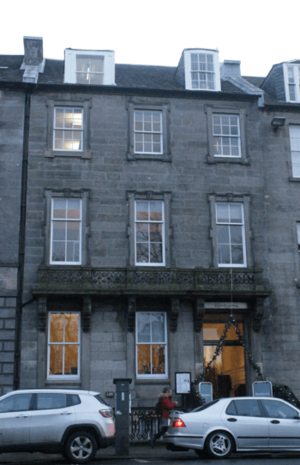William Bindon Blood facts for kids
William Bindon Blood (born January 20, 1817, died January 31, 1894) was a clever Irish engineer. He helped build important things like railways and bridges. He was also a professor and even invented a special bicycle!
William Bindon Blood's Life
William was born in a place called Cranagher, near Ennis in County Clare, Ireland. His family moved to Edinburgh, Scotland, when he was about 12 years old.
He went to school in Edinburgh. After that, he returned to Ireland to study at Trinity College Dublin (TCD). In 1838, he earned a special award called a Gold Medal for his studies in mathematics. At that time, engineering was not yet a main subject at TCD.
William started his career as an engineer in 1840. He first worked on railways in the south of Scotland. Later, he joined the famous engineer Isambard Kingdom Brunel. William worked as a civil engineer helping to build the Great Western Railway in England. By the end of that decade, he was a main engineer for the Birmingham & Oxford Railway Company.
From 1850 to 1860, William was a professor of civil engineering at Queen's College Galway. He took over from the first professor, Thomas Drane. While teaching, William did amazing work with mathematics. He studied how stresses affect long bridges with many beams. He even used small models to test his ideas, and they worked!
His important work helped design the Boyne Viaduct in Drogheda. This railway bridge was finished in 1855. Its middle part was 269 feet long, which made it the longest in the world at that time! In 1882, Queen's University, Ireland gave him an honorary science degree (DSc).
William Bindon Blood passed away in 1894.
His Family and Inventions
In 1841, William married Margaret Stewart in Scotland. They had four children together. Their oldest son was Sir Bindon Blood, who became a very successful soldier in the British Army. Sadly, Margaret died young in 1849.
After moving back to Ireland, William married Maria Augusta Persse in 1855. They had two children, but Maria also passed away when she was young.
William was also interested in cycling when it was a new hobby. In 1876, he even got a patent for a special lightweight 'Dublin tricycle' that became quite popular!


